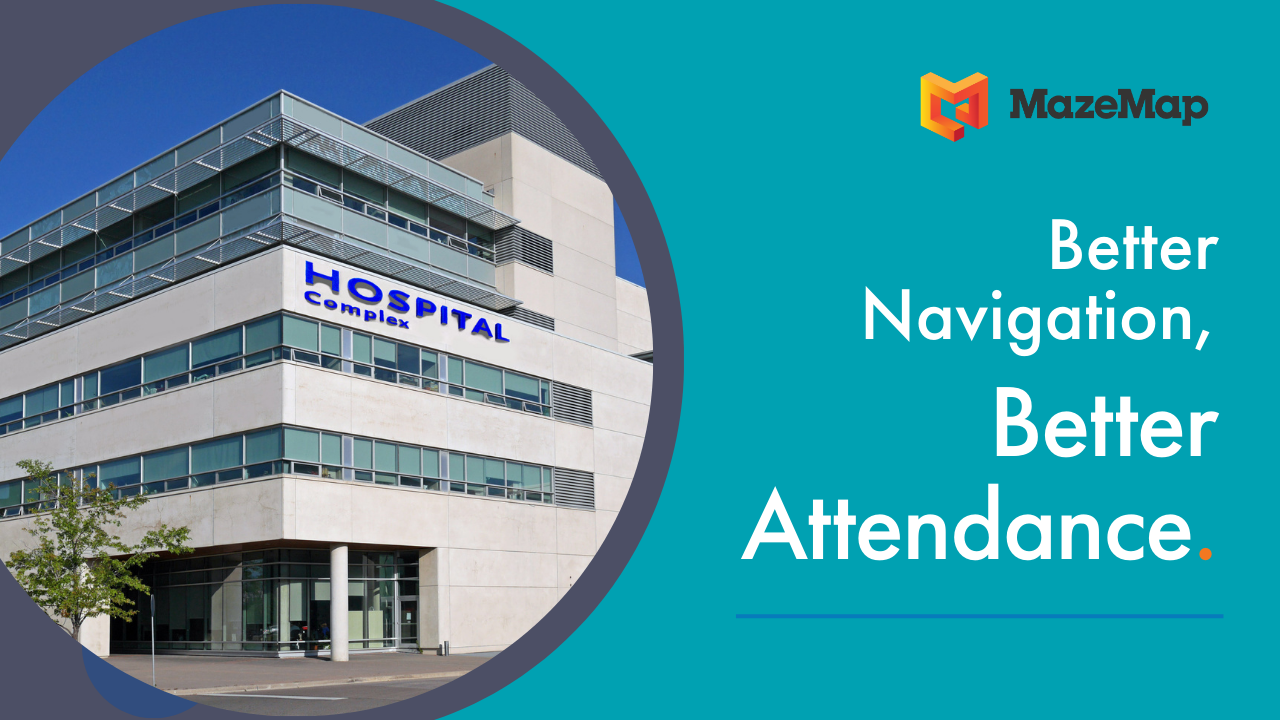Walk through almost any hospital and one operational pattern stands out immediately: the challenge is rarely too few rooms, but too little visibility into how those rooms are used.
Staff encounter the same issues every day, consultation rooms that appear booked but sit empty, MDT spaces blocked by abandoned reservations, and long walks across departments to find an available meeting or assessment room. These delays accumulate, creating friction that affects patient care, staff coordination, and operational efficiency.
Hospitals are increasingly turning to data-driven space management as a practical way to reclaim time, reduce waste, and improve patient flow.
1. Where Room Inefficiency Happens in Hospitals (And Why It’s Hard to See)
Hospitals run thousands of clinical and administrative interactions daily, yet room usage is often managed using disconnected systems: departmental calendars, whiteboards, spreadsheets, or manual processes.
This leads to several predictable inefficiencies:
- Ghost bookings: Rooms reserved but unused
- Double-bookings: Different departments unknowingly reserving the same space
- Underutilized rooms: Spaces that appear busy but have low real occupancy
- Search time: Staff walking or calling around to locate a free room
These issues create bottlenecks for clinical teams, MDTs, outpatient flows, and operational staff.
2. How Poor Space Management Affects Patient Care and Staff Workflows
Space inefficiency isn’t just logistical, it directly affects clinical performance.
Hospitals experience:
- Slower patient throughput when clinicians cannot find consultation or treatment rooms
- Longer appointment wait times due to unavailable or misallocated spaces
- Reduced staff efficiency as time is lost navigating large campuses
- Coordination delays for MDT meetings and interdisciplinary assessments
Multiple time-motion studies show clinicians spend meaningful time walking between areas, time that increases when room availability is unreliable.
3. Why Real-Time, Accurate Space Data Is Essential for Hospitals
Hospitals need true utilization data, not calendar assumptions.
Without real-time accuracy, it’s impossible to answer key operational questions:
- Which rooms are actually occupied right now?
- How many bookings are no-shows?
- Which departments consistently overbook?
- Where do we have hidden capacity?
- Is expansion necessary, or is current space mismanaged?

4. What Data-Driven Booking Enables Inside Hospitals
When hospitals adopt real-time, automated booking systems, they gain visibility that directly supports operations.
Data-driven booking makes it possible to:
- Show live availability for clinical and administrative rooms
- Reduce appointment and workflow delays
- Improve staff coordination across departments
- Reclaim capacity from unused rooms
- Support better long-term planning through utilization analytics
Many hospitals discover underused spaces, capacity they didn’t know they had, once ghost bookings are removed.
5. How Wayfinding Reduces Delays and Complements Booking Systems
Large hospitals are notoriously complex. Even experienced staff can spend unnecessary time navigating between units, departments, or floors.
Integrating wayfinding with room booking helps hospitals:
- Shorten travel time between appointments
- Reduce delays for MDT meetings and urgent consults
- Improve patient navigation and reduce late arrivals
- Give staff a clear route to the correct room every time
A booking system shows availability. Wayfinding ensures the right people reach the right place at the right time.
6. Operational and Sustainability Benefits for Hospitals
Hospitals are energy-intensive environments. Underutilized rooms contribute to:
- Higher HVAC energy usage
- Unnecessary lighting costs
- Increased cleaning workloads
- Wasteful operational patterns
Utilization data helps hospitals:
- Consolidate activity into fewer spaces
- Reduce energy loads in unused zones
- Adjust cleaning based on real usage
- Support national ESG or net-zero frameworks (e.g., NHS Net Zero)
Optimizing room usage is a practical step toward reducing operational waste and environmental impact.
7. Spatial Data as a Foundation for the Digital Hospital
Accurate room utilization data supports broader digital transformation initiatives, such as:
- Digital twins
- IoT-enabled asset tracking
- Predictive maintenance
- Clinical workflow optimization
- Long-term real estate planning
Hospitals that modernize their space data infrastructure now are better positioned for emerging digital technologies.
Conclusion: Data-Driven Space Management Improves Efficiency and Care Quality
Hospitals deliver better care when their spaces support smooth workflows.
Data-driven space management gives leaders real visibility into how rooms are used, reduces delays, improves staff efficiency, and strengthens patient flow.
When every room matters, accurate data makes the difference.
Discover how MazeMap helps hospitals optimize space and improve patient care.
Book a demo or visit https://www.mazemap.com/










.png)
